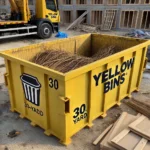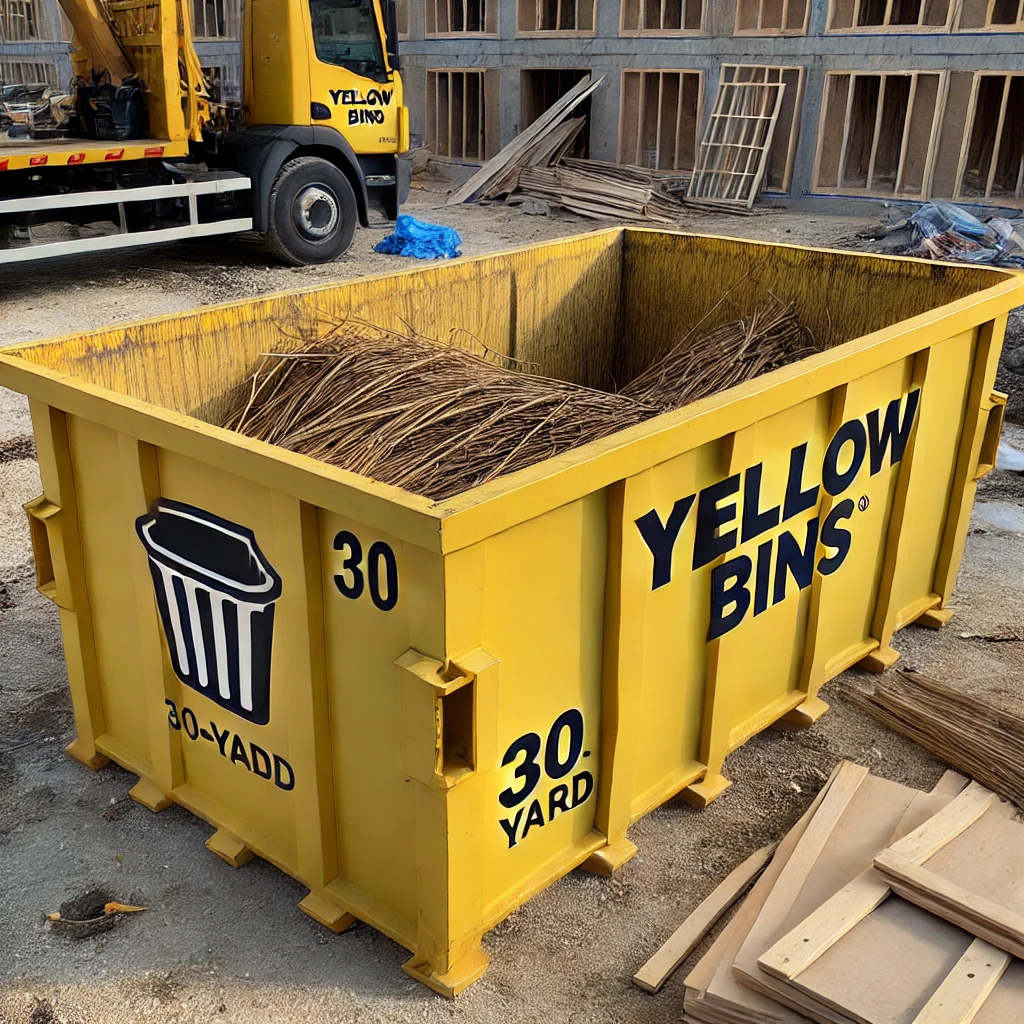At Yellow Bins, we know that choosing the right bin size can make or break your project. Whether you are tackling a home renovation, clearing out a large space, or managing construction debris, the right bin ensures efficiency, safety, and cost control. Two of the most popular options are the 20-yard and 30-yard bins. This guide compares capacity, weight limits, and ideal uses to help you decide which one fits your project best.
Understanding Yard Size and Waste Volume
The term “yard” in bin rental refers to a cubic yard, which measures volume rather than weight. A cubic yard equals 3 feet by 3 feet by 3 feet, or roughly the size of a standard household oven. Estimating your debris in cubic yards helps prevent overfilling and ensures you choose a bin that fits both your materials and your space.
A 20-yard bin holds about 20 cubic yards of waste, while a 30-yard bin holds 30 cubic yards. That 10-yard difference can make a big impact depending on how heavy or bulky your debris is.
20-Yard Bin Overview
A 20-yard bin is one of the most versatile sizes offered by Yellow Bins. It provides enough space for most moderate home improvement or cleanout projects without requiring large placement space. Typically, a 20-yard bin can hold about six pickup truck loads of debris.
It is perfect for:
- Medium home renovations such as basement or kitchen remodels
- Deck, shed, or fence removal projects
- Garage and attic cleanouts with mixed materials
This bin’s lower height makes loading easy by hand or with small equipment. It also tends to be the most cost-efficient choice for homeowners who want plenty of room but not an oversized container.
30-Yard Bin Overview

A 30-yard bin is ideal for larger residential or commercial projects. It holds roughly nine pickup truck loads of waste, with a volume of 30 cubic yards. Yellow Bins’ 30-yard bin measures about 16 feet long, 7.5 feet wide, and 7 feet tall, offering a weight capacity around two tonnes.
This larger bin handles debris from full home renovations, construction framing, and demolition waste. It also minimizes the need for multiple hauls, saving time and helping maintain a clean, organized job site.
20-Yard vs 30-Yard Comparison
| Feature | 20-Yard Bin | 30-Yard Bin |
| Volume | 20 cubic yards | 30 cubic yards |
| Equivalent Loads | ~6 pickup loads | ~9 pickup loads |
| Approximate Size | 14 ft L × 7.5 ft W × 5 ft H | 16 ft L × 7.5 ft W × 7 ft H |
| Weight Capacity | Around 1.5 tonnes | Around 2 tonnes |
| Best For | Medium renovations, small cleanouts, roofing | Large cleanouts, full home renovations, construction |
| Ease of Placement | Fits tight residential driveways | Needs more clearance and space |
| Cost Efficiency | Budget-friendly for moderate projects | Higher capacity reduces total hauls |
Both bins manage heavy materials, but if you expect dense waste such as concrete, drywall, or framing debris, upgrading to a 30-yard bin prevents overflow and helps avoid overweight charges.
When a 20-Yard Bin Makes Sense
For most medium-scale projects, the 20-yard bin strikes the perfect balance between capacity and maneuverability. It fits comfortably on residential driveways and offers enough volume for home renovations or light construction jobs.
This bin is especially convenient for property owners working on projects such as basement cleanouts or small remodeling work. The shorter height makes loading by hand easier, and its footprint minimizes driveway impact.
When to Choose a 30-Yard Bin
If you are managing a large renovation or construction project, the 30-yard bin is the better choice. The added space accommodates large, irregular debris like framing materials, drywall, flooring, and bulky furniture.
A 30-yard bin also reduces the number of pickups and drop-offs during long projects. It is commonly used for whole-home remodels, multi-room demolitions, or large commercial waste removal. If you are unsure between the two, it is safer to size up rather than risk running out of space.
Choosing Based on Project Size and Waste Type
Your bin choice depends on both the amount and type of debris. Light materials like cardboard, wood, and drywall fill space quickly but do not weigh much, making a 20-yard bin sufficient. Heavy materials like shingles, tile, or construction rubble might exceed the 20-yard’s weight allowance before reaching the top, which makes the 30-yard option safer and more efficient.
Regardless of bin size, always load debris evenly and never above the rim. Yellow Bins reminds customers to keep materials level to ensure safe transport and avoid overfill penalties. If you are uncertain, their team can help estimate waste volume and suggest the best bin size for your project.
Why Rent from Yellow Bins
Yellow Bins provides reliable, affordable dumpster rentals across Edmonton and surrounding areas. Their inventory includes a full range of bin sizes from 9-yard to 40-yard, making it easy to match the right size to your project.
Customers choose Yellow Bins for transparent pricing, flexible rental periods, and professional service that keeps every job site organized. Whether you need a 20-yard bin for a home renovation or a 30-yard bin for major construction debris, their team will deliver on time and ensure pickup is handled smoothly.
To find the perfect bin for your next project, contact Yellow Bins today for expert guidance.

